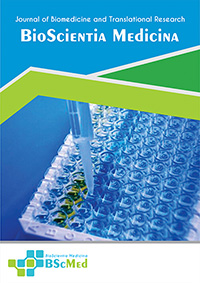Main Article Content
Abstract
Background: Enhalus acoroides (seagrass) possesses valuable bioactive compounds, including quercetin, with potential therapeutic applications, notably antidiabetic effects. However, the poor solubility and low bioavailability of compounds like quercetin limit their clinical efficacy. Phytosomes, phospholipid-based nanocarriers, represent a promising strategy to overcome these limitations. This study aimed to develop and characterize E. acoroides extract-loaded phytosomes to enhance its potential bioavailability.
Methods: E. acoroides was collected, processed, and extracted using ultrasound-assisted extraction (UAE). Total phenolic (TPC) and flavonoid content (TFC) were determined. Phytosomes were prepared using the thin-layer hydration method with varying extract-to-soya lecithin ratios (F1=1:1, F2=1:2, F3=1:3). Characterization involved particle size analysis, zeta potential measurement, Fourier Transform Infrared Spectroscopy (FTIR), Transmission Electron Microscopy (TEM), entrapment efficiency (EE%) determination via HPLC, and in vitro dissolution studies.
Results: The UAE extract yielded TPC of 0.318 ± 0.036 mg GAE/g and TFC of 1.023 ± 0.022 mg QE/g. Phytosome formulation F1 (1:1 ratio) exhibited optimal characteristics: particle size of 276.4 nm, PDI of 0.591, zeta potential of -18.0 mV, EE% of 80.47 ± 2.62%, and a spherical morphology. FTIR confirmed complexation. F1 phytosomes demonstrated significantly enhanced dissolution, releasing 87.13% of the entrapped compound over 12 hours compared to the crude extract.
Conclusion: E. acoroides extract was successfully encapsulated into phytosomes using a thin-layer method. The F1 formulation (1:1 extract:phospholipid ratio) demonstrated favorable physicochemical properties (nanoparticle size, moderate stability, high EE%) and markedly improved in vitro dissolution, suggesting enhanced bioavailability potential for E. acoroides phytoconstituents.
Keywords
Article Details
As our aim is to disseminate original research article, hence the publishing right is a necessary one. The publishing right is needed in order to reach the agreement between the author and publisher. As the journal is fully open access, the authors will sign an exclusive license agreement.
The authors have the right to:
- Share their article in the same ways permitted to third parties under the relevant user license.
- Retain copyright, patent, trademark and other intellectual property rights including research data.
- Proper attribution and credit for the published work.
For the open access article, the publisher is granted to the following right.
- The non-exclusive right to publish the article and grant right to others.
- For the published article, the publisher applied for the Creative Commons Attribution-NonCommercial-ShareAlike 4.0 International License.





